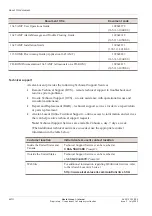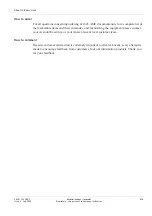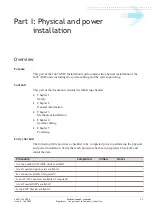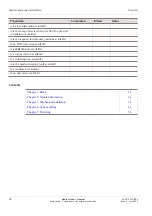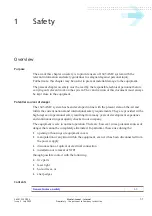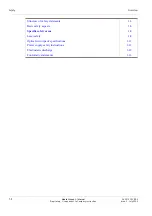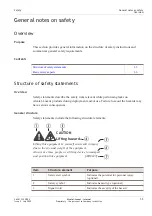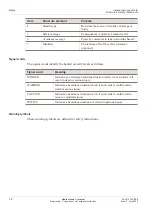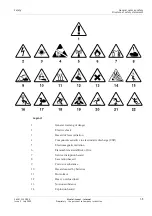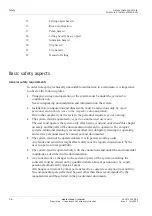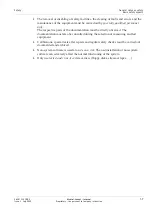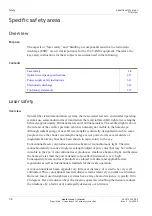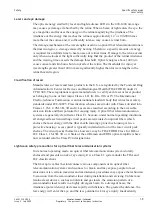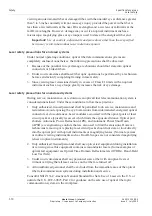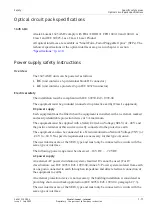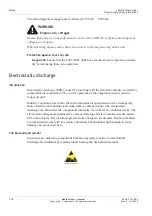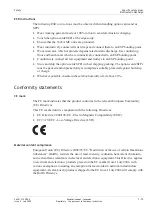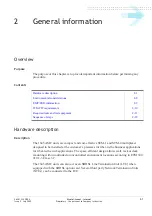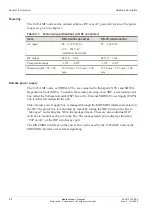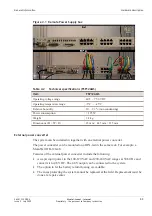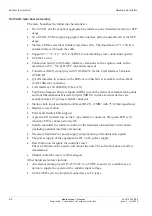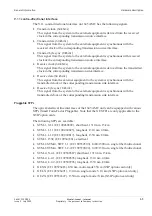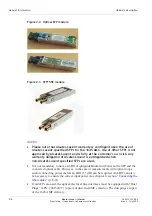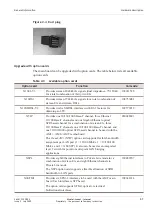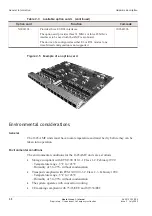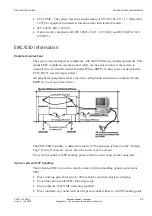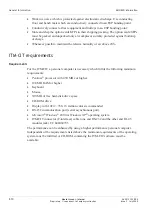
viewing an unterminated fiber or damaged fiber with the unaided eye at distances greater
than 5 to 6 inches normally will not cause eye injury provided the power in the fiber is
less than a few milliwatts at the near IR wavelengths and a few tens of milliwatts at the
far IR wavelengths. However, damage may occur if an optical instrument such as a
microscope, magnifying glass or eye loupe is used to stare at the energized fiber end.
Important!
Use of controls, adjustments and procedures other than those specified
herein may result in hazardous laser radiation exposure.
Laser safety precautions for enclosed systems
Under normal operating conditions, optical fiber telecommunication systems are
completely enclosed; nonetheless, the following precautions shall be observed:
1. Because of the potential for eye damage, technicians should not stare into optical
connectors or broken fibers.
2. Under no circumstance shall laser/fiber optic operations be performed by a technician
before satisfactorily completing training in laser safety.
3. Since viewing laser emissions directly in excess of Class I/1 limits with an optical
instrument such as an eye loupe greatly increases the risk of eye damage.
Laser safety precautions for unenclosed systems
During service, maintenance, or restoration, an optical fiber telecommunication system is
considered unenclosed. Under these conditions, follow these practices:
1. Only authorized, trained personnel shall be permitted to do service, maintenance and
restoration. Avoid exposing the eye to emissions from unterminated, energized optical
connectors at close distances. Laser modules associated with the optical ports of laser
circuit packs are typically recessed, which limits the exposure distance. Optical port
shutters, Automatic Power Reduction (APR), and Automatic Power Shut Down
(APSD) are engineering controls that are also used to limit the emissions. However,
technicians removing or replacing laser circuit packs should not stare or look directly
into the optical port with optical instruments or magnifying lenses. (ormal eyewear
or indirect viewing instruments such as Find-R-Scopes are not considered magnifying
lenses or optical instruments).
2. Only authorized, trained personnel shall use optical test equipment during installation
or servicing since this equipment contains semiconductor lasers. (Some examples of
optical test equipment are Optical Time Domain Reflectometers (OTDRs), Hand-Held
Loss Test Sets).
3. Under no circumstances shall any personnel scan a fiber with an optical test set
without verifying that all laser sources on the fiber are turned off.
4. All unauthorized personnel shall be excluded from the immediate area of the optical
fiber telecommunication systems during installation and service.
Consult ASI Z136.2 American ational Standard for Safe Use of Lasers in the U.S. or
outside the U.S., IEC-60825, Part 2 for guidance on the safe use of optical fiber optic
communication systems in the workplace.
Safety
Specific safety areas
Laser safety
...................................................................................................................................................................................................................................
...................................................................................................................................................................................................................................
1-10
Alcatel-Lucent – Internal
Proprietary – Use pursuant to Company instruction
365-313-103R8.0
Issue 2
July 2009

